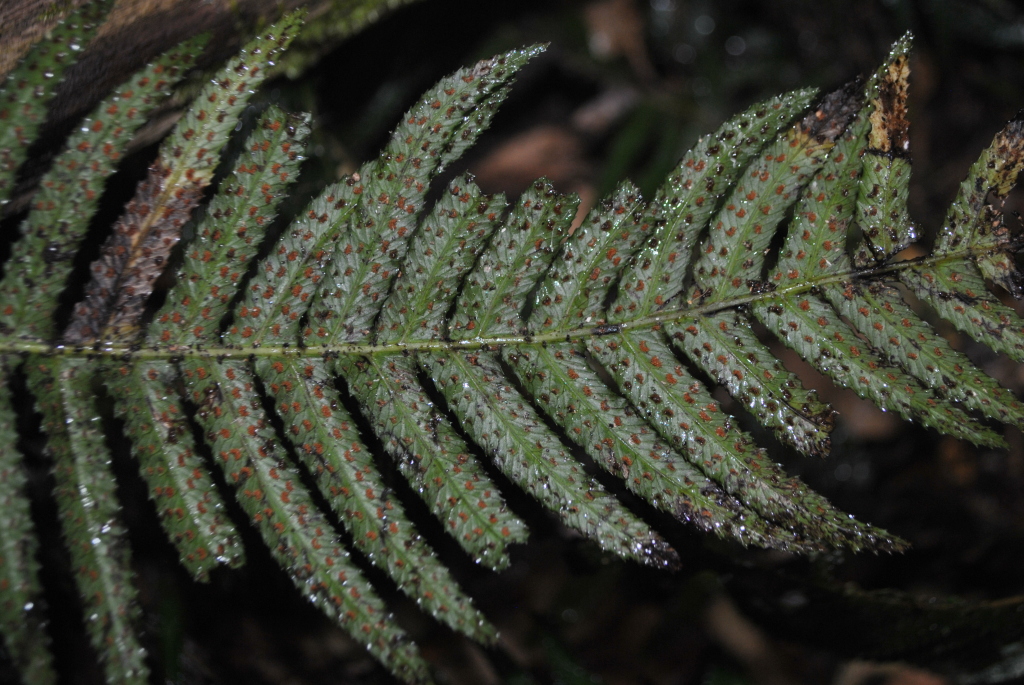Blechnum neohollandicum
Christenh. Prickly Rasp-fernFronds clustered, erect, 20–45 cm long, harsh, prickly at edges. Stipe much shorter than lamina, black, very rough; scales broad, black and shiny, growing from fleshy tubercles which harden and persist. Lamina pinnate, dark green; pinnae (except lowest pair) sessile, close-set, bases flanged and contiguous in upper part of lamina, length irregular but reducing abruptly towards stipe; midveins with small dark scales underneath; lowest pair of pinnae usually isolated and shortly stalked; areoles formed by anastomosing veins in several rows parallel to midvein. Rachis rough on lower surface, scales dark and scattered, hairs absent. Sori oblong to crescent-shaped, c. 1 mm long, in 1–2 rows on each side of midvein; indusium with small hairs.
GipP, EGL, EGU, HSF, HFE. New Zealand. Also Qld, NSW, Vic, Tas. Usually found on forested, often rocky stream banks (more rarely in drier habitats) east from about Bairnsdale, frequently forming extensive colonies.
The lamina is generally dark green and harsh, but young fronds are softer and tinged rosy-pink or magenta. The winged lower rachis with or without a single isolated stalked pair of pinnae is characteristic of this species. Also, the sori of Blechnum neohollandicum are relatively small and often crescent-shaped, while those of B. rupestre and B. parrisiae are usually linear and more elongate. Both B. neohollandicum and B. parrisiae can have a second row of sori on each side of the midvein while B. rupestre always has a single row.
 Spinning
Spinning

